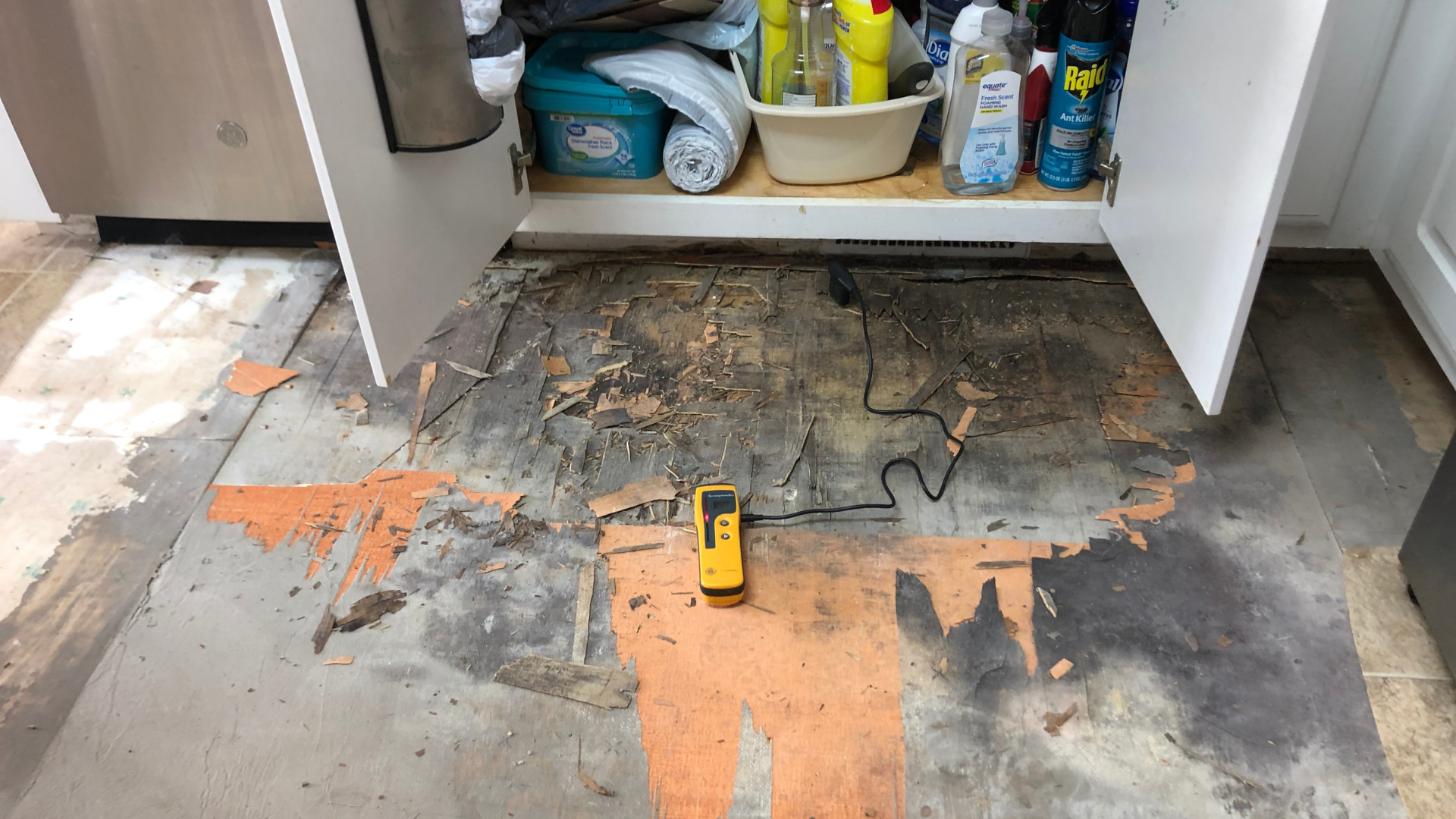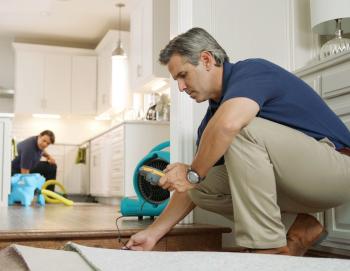Expert-recommended tips for effective Water Damage Restoration
Wiki Article
Water Damage Restoration 101: Comprehending the Process and Price
Water damage can strike suddenly, leaving home owners in a state of complication. Understanding the repair procedure is essential for efficient recovery. From reviewing the damage to choosing the best provider, each step influences the general outcome and price. Elements such as the sort of water damage and urgency likewise play a substantial function. What are the details strategies utilized in remediation, and how can one get ready for prospective expenses?Sorts Of Water Damage

First Analysis and Examination

Water Extraction Strategies
Following the first assessment, effective water removal methods are utilized to alleviate damage and prevent additional issues. These strategies involve the usage of customized equipment such as industrial-grade vacuum cleaners and submersible pumps - Water Damage Restoration. The option of approach depends upon the volume of water present and the sort of materials impacted. For standing water, completely submersible pumps are normally made use of for rapid removal, while vacuum cleaners are ideal for removing water from rugs and furniture. Furthermore, advanced techniques like water extraction floor coverings may be used for hard-to-reach locations - Water Damage Restoration. The objective is to remove as much water as feasible, reducing the capacity for mold and mildew growth and structural damage. Prompt and effective water extraction is necessary in the total water damage restoration processDrying and Dehumidification Process
As soon as the water removal is complete, the drying and dehumidification procedure becomes vital to restoring the damaged area. This stage commonly employs industrial-grade dehumidifiers and air moving companies to effectively reduce moisture levels. The dehumidifiers attract in wet air, removing excess moisture, while air movers distribute air to increase evaporation. Tracking devices is usually used to track moisture and temperature levels, ensuring suitable drying out conditions. The period of this procedure can vary relying on the degree of the water damage and environmental aspects. It is necessary to completely completely dry all affected products, consisting of wall surfaces, flooring, and furnishings, to stop mold and mildew development and structural damage. Correct implementation of this action is vital for an effective reconstruction outcome.Cleaning Up and Sterilizing Afflicted Locations
When the drying out procedure is full, a comprehensive first evaluation and evaluation of influenced areas is important to recognize contamination degrees. Effective cleansing techniques and appropriate products should then be employed to get rid of particles and stains. Sanitization and disinfection techniques are essential to ensure that harmful microorganisms are eliminated, recovering the space to a secure problem.Initial Analysis and Inspection
Prior to beginning any restoration initiatives, a detailed preliminary assessment and examination of the impacted locations are important for effective cleaning and disinfecting. This procedure includes identifying the degree of water damage, identifying the resource of the water intrusion, and evaluating the products affected. Examiners normally search for indicators of mold and mildew growth, architectural integrity concerns, and damaged possessions. The assessment likewise includes examining wetness degrees making use of customized tools to assure no concealed water pockets continue to be, as these can bring about more complications. Recording the searchings for is crucial for intending the following action in the reconstruction procedure. A thorough first evaluation allows remediation professionals to develop a targeted method for effective cleansing and disinfecting, eventually minimizing damage and health and wellness threats.Cleansing Techniques and Products
Effective cleaning and sterilizing of water-damaged areas call for a variety of techniques and products customized to the details materials influenced. For porous surfaces like drywall and carpets, removal approaches are important to get rid of excess wetness, followed by deep cleansing with specialized detergents. Non-porous products such as ceramic tile or metal can be cleansed utilizing commercial-grade cleaners that properly get rid of impurities. Vapor cleansing is one more efficient method, particularly for rugs and furniture, as it uses heats to get rid of bacteria and mold (Flood Cleanup Services). Furthermore, green items are progressively prominent for their safety and security and efficiency - Water Extraction And Drying. Ultimately, selecting the appropriate cleaning methods and items not just ensures instant tidiness however also help in avoiding more damage and health and wellness threats associated with water invasionSanitization and Disinfection Methods
When attending to water damage, proper sanitization and sanitation approaches are vital to assure the safety and health and wellness of the damaged atmosphere. After preliminary cleansing, surface areas need to be treated with appropriate anti-bacterials to eliminate virus, mold, and microorganisms that flourish in wet conditions. Common techniques include the use of EPA-approved chemical disinfectants, which can be used via splashing or cleaning techniques. Additionally, ultraviolet (UV) light systems can successfully sterilize areas by reducing the effects of microorganisms without harsh chemicals. The selection of method commonly depends on the kind of products affected and the extent of contamination. Inevitably, extensive sanitization not only brings back a safe space however likewise assists stop future wellness dangers linked with sticking around moisture and mold development.
Repair Services and Restoration Options
Assessing the damage triggered by water exposure is important for figuring out the appropriate repairs and repair alternatives. Homeowners may deal with numerous problems, including damaged drywall, warped flooring, and compromised architectural components. Depending on the extent of the damage, repair work may involve changing areas of drywall, mounting brand-new floor covering, or reinforcing structural light beams. In instances of extreme damage, complete replacement of damaged products could be required. Furthermore, professional conservators typically recommend utilizing dampness meters to analyze concealed wetness degrees prior to choosing on the very best strategy. It is necessary to act promptly to protect against mold growth and more degeneration. Selecting the best options not only recovers the building yet likewise guarantees long-term safety and security and performance.Factors Affecting Restoration Expenses

The extent of water damage directly affects the restoration sets you back homeowners can anticipate to sustain. Elements such as the resource of the Water Extraction And Drying water, the duration of exposure, and the damaged materials considerably affect prices. Clean water damage from a damaged pipeline is usually less costly to restore contrasted to damage caused by sewage. In addition, the degree of contamination dictates the requirement for specialized cleaning and disposal services, even more enhancing expenses. Geographical area additionally contributes, as regional labor rates and accessibility of repair solutions can vary. Finally, the seriousness of the action influences prices; quicker treatments usually result in reduce general costs by stopping more damage. Recognizing these variables is crucial for house owners when estimating repair expenses.
The three primary types of water damage are categorized based on contamination levels: clean water, gray water, and black water. A complete preliminary assessment and inspection are essential steps in the water damage restoration procedure. For standing water, completely submersible pumps are commonly used for rapid elimination, while vacuum cleaners are optimal for drawing out water from carpets and upholstery. The extent of water damage straight influences the repair costs homeowners can anticipate to incur. Tidy water damage from a broken pipeline is normally less pricey to bring back compared to damage triggered by sewage.
Report this wiki page